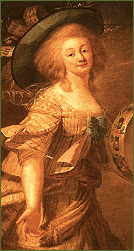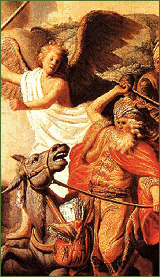|
Its decor reflects its past as a private mansion giving it a warm
and authentic atmosphere and covering four floors surrounding a courtyard, the small rooms
of this house display the delightful collection assembled by Ernest Cognacq. But
located in the Marais district of Paris near to the Musee Carnavalet and many others, it
makes this one a bit less crowded than it might be if it were on its own or more widely
advertised.
Ernest Cognacq and Marie-Louise Jay made their fortune in a decidedly 20th century way by
selling mass-produced goods in the very modern La Samaritaine department store, which they
themselves founded. But when it came to their own shopping tastes, this
incredible couple preferred the unique items that were one of a kind or custom made and
their taste in art and furniture was far more old-fashioned. And it was
between the years of around 1900 through to about 1925 that they amassed one of the finest
private collections of 18th-century painting and objets d'art from around the world, which
the couple then donated to the City of Paris upon
their deaths.
This charming museum has kept most of its original layout from when it was a private
residence including the parquet floors and has a little passage leading to its garden and
this French formal garden is so typical of the 17th century, but it is best seen from the
windows of the upper floors of the house which gives the best views.
The exhibition focuses on 18th century works and in particular those of the Rococo style
by French artists such as Watteau, Greuze and Boucher, but there are also works from
English, Dutch and Flemish painters like Reynolds, Lawrence, Rembrandt and Rubens.
Yet some of the 18th century's most valuable decorative works are exhibited, which range
from ceramics and porcelain to delicate cabinets and paintings by the likes of Canaletto
and Fragonard to name but a few. However, to some, the best displays are also the
smallest, like the tiny enamel portraits showcased on the third floor, or the exquisite
inlaid snuff boxes, sewing cases, pocket watches, perfume bottles, and cigar cutters that
are on the top floor of this museum. And like the rococo style itself, there are
many hidden surprises here, so to fully appreciate this place, you should take your time
when exploring each of the intimate rooms.
You can get to see and feel what daily home life was like before the Revolution with
furniture and furnishings, such as a King Louis XVI chair covered with Beauvais tapestry,
a stunning mantle clock by S?vres, a bureau inlaid with ivory, and a royal bed, which
once belonged to the Madame Adela?de who was aunt to the king.
So as you can gather, a visit to the Mus?e Cognacq-Jay offers the experience of being
transported back in time to a house whose occupants have momentarily left. With the
charming, intimate atmosphere it offers the visitor a glimpse of what life was like two
centuries ago, in fact, for those of you who are interested in fashion history or how
people looked, you can get the complete picture from this museum and it is another rare
opportunity to see how cultured rich Parisians once lived.
There are information cards, but lots of these are only in French, although they can be
incredibly helpful in understanding more about objet d'art, especially if you visit the
odd flea market.
The museum is open from 10am to 5.30pm on a Tuesday through to Sunday, but is always
closed on Mondays.
Address & Contact Details:
Mus?e Cognacq-Jay
H?tel Donon
8 Rue Elz?vir
75003
Paris
Telephone: 1 40 27 07 21
|
|



